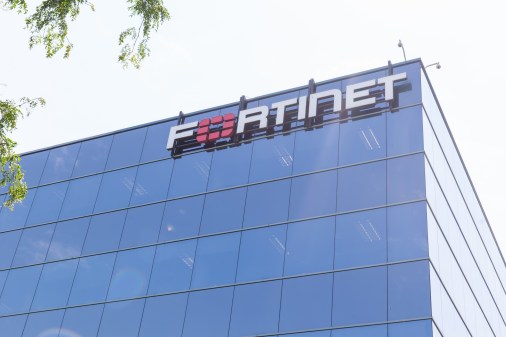Future-ready cybersecurity: Lessons from the MITRE CVE crisis

The recent funding crisis surrounding MITRE’s Common Vulnerabilities and Exposures (CVE) program was more than just a bureaucratic hiccup — it was a wake-up call for an industry that has relied on CVEs for years to identify, categorize, and prioritize vulnerabilities. Out of the blue, we discovered the foundation was suddenly at risk. Worse still, we had a moment to ponder what might happen if the contract were not signed by the April 16 deadline.
It’s good news that the program funding was renewed, but we cannot let this 11th-hour rescue draw attention away from the momentary disruption that shined a very bright light on the fragility of the current security ecosystem. The bottom line is this: We are far too dependent on having access to the 279,000 publicly available CVE records.
It’s frightening to think this library of vulnerability intelligence could suddenly be interrupted. That scenario should concern security teams. Imagine, for example, if ChatGPT stopped receiving training updates. In today’s fast-paced world, how long would it take for it to be outdated and ultimately irrelevant? The same applies to CVEs. In the blink of an eye, security teams would be flying blind as cyber threats mounted around them.
The domino effect of CVE disruption
Without the CVE program, the ripple effects would be significant and immediate. Here are some offshoots we could expect:
Deterioration of National Vulnerability Databases (NVD): Databases like the NVD rely on CVEs for accurate and standardized vulnerability data. In their absence, these would quickly become outdated and inconsistent, making them far less reliable than they are today.
Disruption to security tools: EDR, XDR, vulnerability scanners, SIEMs, and patch management systems depend on CVE data to detect and respond to threats. With a CVE disruption, these tools would become significantly less effective, exposing businesses to an array of untracked vulnerabilities.
Impact on incident response: Incident response teams use CVEs to assess risk and prioritize mitigations during attacks. In their absence, response times would grow dramatically, allowing attackers to reap far greater damage.
Critical infrastructure risks: Sectors like energy, health care, and water rely on CVEs to secure their systems. Outdated CVE data would increase the risk of successful attacks on these essential services.
Global supply chain vulnerabilities: CVEs provide a common language for supply chain security. Without them, supply chains would become fragmented, increasing the risk of attacks on vendors and suppliers.
Loss of standardization: CVEs create a shared framework for discussing vulnerabilities. Without them, the industry would face fragmentation, inefficiency, and reduced collaboration.
Erosion of trust in cybersecurity: CVEs are a key pillar of the cybersecurity ecosystem. Losing them would erode trust in tools, processes, and vulnerability management practices.
Increased fragmentation: In the absence of MITRE’s oversight, multiple organizations might attempt to create their own vulnerability tracking systems, leading to inefficiencies and confusion.
For some, the answer may be a combination of alternative databases. For example, EUVD, VulDB, or OSV. However, the reality is that a true and viable replacement does not exist, which should concern us all.
Traditional vulnerability management is broken
And our fragility doesn’t end with the CVE disruption. There is a bigger, more fundamental issue — traditional vulnerability management is broken. It’s reactive, fragmented, and increasingly unfit for purpose. Despite these realities, organizations continue relying on vendor patches and legacy workflows that take too long to address known issues.
Consider the following:
- Today, the mean time to patch is more than 60 days for many organizations.
- Some legacy systems may remain unpatched due to operational constraints, such as a disruption of critical business processes or because it would simply be too costly or technically challenging.
- Misconfigurations and privilege misuse continue to go unaddressed for multiple reasons, such as human error, lack of awareness, or due to the complexity and scale of a business’s IT environment.
Whatever the case, these realities are providing attackers with the opportunity to exploit zero-days, move laterally across networks, and capitalize on overlooked misconfigurations. And let’s not forget ransomware — it is the prime example of what happens when open cracks are exploited and, in lieu of fast, proactive mitigation, organizations are left exposed to encryption, extortion, and downtime.
Defining a future-ready approach
We need to evolve our current model in favor of a future-ready cybersecurity strategy. This modernized approach must be built on the principles of proactive defense, adaptive protection, and continuous resilience to ease our dependency on external systems and anticipate attacker behavior.
Key future-ready Components:
Start with anti-ransomware prevention, which can stop ransomware payloads before they execute and prevent attackers from exploiting vulnerabilities or moving laterally across networks. Anti-ransomware prevention also protects critical systems and ensures operational continuity, even in the face of advanced ransomware campaigns. Additionally, it reduces reliance on reactive patching or CVE updates by proactively neutralizing threats.
Next comes preemptive cyber defense. Here, the focus is on reducing the attack surface and neutralizing threats before they can cause harm. Some of the preemptive elements include adaptive exposure management (AEM), which can identify and mitigate risks across the attack surface. This includes misconfigurations, privilege escalation threats, and weak credentials.
Another key cog is automated moving target defense (AMTD). AMTD can dynamically morph system environments to make vulnerabilities unexploitable and stop advanced threats, including ransomware and zero-day exploits, in real time.
Patching is another vital component, specifically virtual patching and patchless protection. These can block exploitation attempts without modifying the underlying software. While only temporary, these can shield systems, ensuring business continuity and optimum productivity while the security teams wait for vendor patches or CVE data. Virtual patching and patchless protection also protect legacy systems and critical infrastructure that cannot be updated through traditional patching.
A final area of this future-ready approach is ring-fencing, which serves as a barrier around new applications as they are introduced into the environment. By isolating applications and processes, businesses can stop unauthorized access and prevent lateral movement within networks. Beyond limiting access, ring-fencing can also contain threats that may exist within each application. This ensures attacks cannot spread and secures other vital assets to minimize damage and disruption.
Why now?
The cybersecurity landscape is becoming more complex, with attack surfaces expanding, threats growing in sophistication, and regulations tightening. Adding insult to injury, defenders are often outpaced and underfunded. Now, imagine teams trying to secure their perimeter without access to the latest CVEs.
While the industry dodged that bullet this time, it won’t last the next disruption. Whether it’s a data enrichment delay, an exploit toolkit leak, or a massive ransomware campaign, our systems must be ready to operate effectively when key components falter. It’s time for a model that doesn’t just react to the latest CVE, but anticipates and neutralizes threats before they manifest.
That’s what being future-ready is all about.
Brad LaPorte is chief marketing officer at Morphisec.






